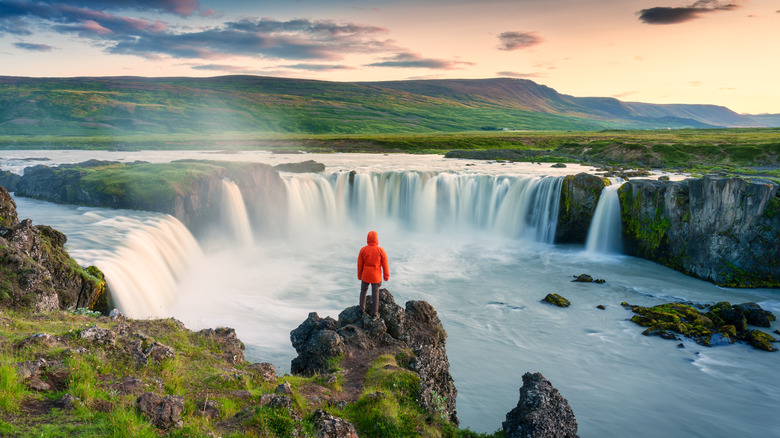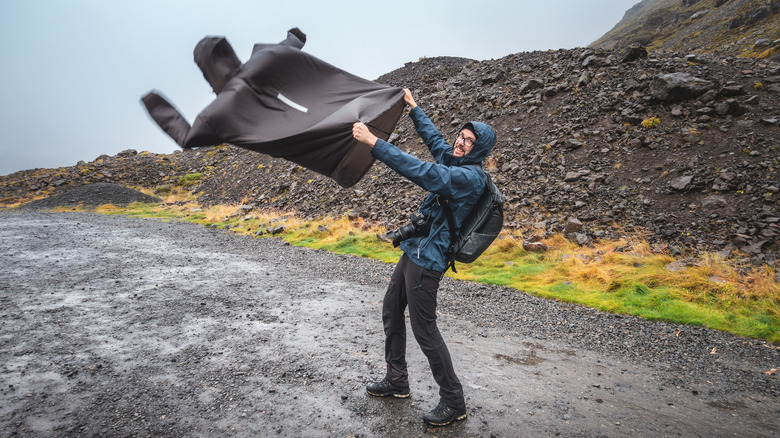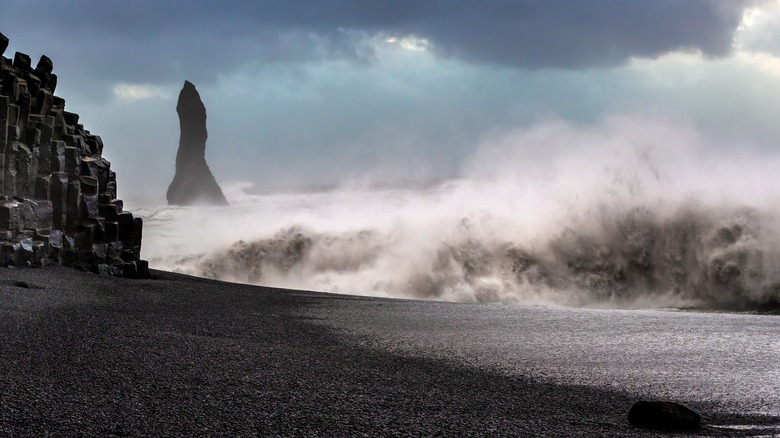The Element That Makes Iceland Much More Dangerous Than Tourists Realize, Per Rick Steves
A trip to Iceland can be an absolute dream and like nothing you've seen before. From the fjords to volcanoes, the northern lights to the thermal springs, there are so many sights and destinations in Iceland you cannot miss. However, there are also things you absolutely must know about the weather there before you go. Whether you're planning your first trip to Iceland or you visit all the time, you probably know that it can get cold, but there is another element that can be really dangerous, according to a post from travel pro Rick Steves on his website. That element is wind, and you cannot take it lightly.
Steves mentions that the wind might be something the locals are used to, but it's likely more intense than you expect as a tourist. He says, "Icelanders have a higher standard for what qualifies as 'windy.' If you think it's windy, it's just a mild breeze to them. If they say it's windy, it's probably a genuine storm." Steves himself has had his own issues with it, and he's got some advice for dealing with it. Here's what you must keep in mind about windy conditions in Iceland.
Beware of the Icelandic wind
The winter in Iceland can get stormy, along with intense winds and gusts, but Steves tells us it can happen at other times during the year. He said, "Even in summer, you'll likely encounter winds that are uncomfortable or dangerous to walk or drive in." If you've never been in a storm like that, it can be difficult to imagine what it feels like, but you can actually be blown over. It almost happened to Steves. He revealed, "Once, while I stood on a rock to snap a photo, a freakish gust nearly blew me into the sea."
Iceland can have wind speeds of around 70 mph in storms, though it can gust even higher than that. If you happen to be standing on ice or on a slippery rock, you could be in trouble. Steves suggests checking the Icelandic weather service to see how windy it will get, and cautions that ice and wind don't mix. He even mentions that "Car rental agencies offer insurance supplements for 'wind damage and sandstorms.'" That alone should be a warning in and of itself. In fact, Steves says it's not a great idea to drive outside of Reykjavik and the area by the airport at all from November through March as some roads "can be a sheet of ice for weeks at a time, especially at higher elevations."
Other things to know about the wind in Iceland
You should also look at the windchill when deciding what to wear for the day, as it can make things feel extra chilly. Note that in Iceland, you'll often see wind measurements in meters per second (m/s). 11-17 m/s is a strong wind and can make driving difficult, and above 18 m/s you really shouldn't drive at all. (Icelanders often stay home themselves if it goes above 20 m/s.) Even 6-10 m/s can push your body around, depending on your size and the condition of the ground. If you're in doubt, ask your hotel concierge about weather conditions. If a tour or event is canceled for wind or other weather events, do not try taking it on yourself. You can check road conditions in Iceland here.
If you plan on setting out on foot in areas that are icy and windy, make sure to pack the right hiking gear and consider packing a really helpful item. Steves says, "Cautious travelers visiting between December and February should pack a pair of ice cleats to strap over their shoes." They're also called crampons and they're similar in theory to putting chains on your tires in snowy weather.


